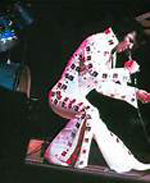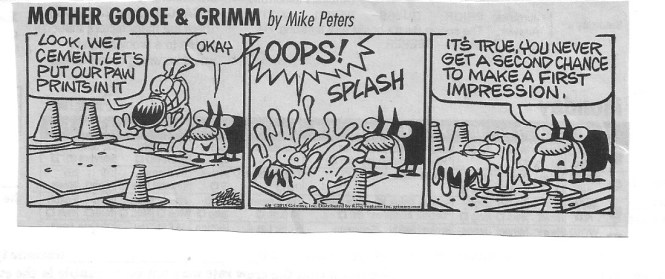 I did a seminar recently for a group of high school seniors. I was told they were not necessarily underachievers, but had no firm plans after graduation. Some had thought about college, a job or the military, but most seemed only interested in hanging around waiting for something to happen. The common thread was a strong case of “Senioritis” and a short attention span for remaining school requirements.
I did a seminar recently for a group of high school seniors. I was told they were not necessarily underachievers, but had no firm plans after graduation. Some had thought about college, a job or the military, but most seemed only interested in hanging around waiting for something to happen. The common thread was a strong case of “Senioritis” and a short attention span for remaining school requirements.
The teacher that sponsored the seminar told me previous speakers had used the standard follow your dreams advice and ended up with a group of bored and distracted students. They had heard the same message since preschool days watching Barney and Friends, and he was concerned it didn’t say enough about what they would encounter in the real world.
Even though I don’t wear a purple dinosaur outfit, I’m the last person to discourage anyone from following their dreams. But the reality of the real world is not everyone will win The Voice or have their idea bankrolled on Shark Tank. My assignment that day was to keep the students interested and involved in my seminar on communication skills and share practical real world advice.
But as usual, I also had my own agenda…
Everyone has a talent and a desire for something. It may not even involve becoming The Voice or the next Bill Gates. But whatever it might be, it doesn’t have much of a chance becoming a reality by “hanging around waiting for something to happen.”
Lucky for me, the seminar was in the school’s library. So I opened with a very effective follow your dreams message by pulling two of my books from the shelf. It got their attention. Then to hold their attention (staring at book covers for more than ten seconds is not as interesting as checking text messages for most high school students), I turned the attention to them.
I asked about their personal interests.
With this particular group of students, no one said a word about math, science or history. They talked about music, poetry, fashion and art. And when they expressed their ideas, the enthusiasm was obvious. They wanted to talk about it and involve the others. I imagined it was quite different than their normal participation in math, science or history classes.
So I took it a step further and asked for two volunteers. Most of them raised their hands (probably unlike during the classes mentioned above), but since we had a limited amount of time until the class bell, we could only go with two.
One was a girl into fashion and the other a boy who played guitar.
I told the girl she was going to tell us about her favorite sweater. With the boy, we wanted to know about his dream guitar. Then I gave them a quick assignment. I asked each to write down twothoughts about their item. I wanted to know:
- How owning the item it made them feel and…
- How owning the same item could make someone else feel.
Then they would each talk about their item in a way that would convince the other students they HAD to have either the sweater or the guitar.
Sounds like a sales pitch – doesn’t it?
Then I borrowed an exercise from my stand-up comedy workshops. I told them to imagine we were at a party. All their friends had told interesting and funny stories – and now it was their chance to talk. How would they tell us about their item in a creative way that would express their feelings AND make us laugh?
This is similar to an audience participation game I use at conferences with business people and educators looking to improve their communication skills. In a nutshell, the idea is to make your message more effective while using creative and humorous enhancements to keep it interesting.
 If I could, for my next business conference seminar I’d bring these students with me, take a seat in the audience and let them talk. She basically told the other girls how great they would look in her sweater and how, of course, they would attract more boys. He told the guys how they could look like rock stars with his dream guitar and of course, attract more girls.
If I could, for my next business conference seminar I’d bring these students with me, take a seat in the audience and let them talk. She basically told the other girls how great they would look in her sweater and how, of course, they would attract more boys. He told the guys how they could look like rock stars with his dream guitar and of course, attract more girls.
Sounds like the average television commercial – doesn’t it?
Yes, they were a lot goofier (for lack of a better term) than you’d expect during a real business world sales pitch or networking opportunity. But the end result was the same.
* They held our attention by delivering their message in a way we found very entertaining and memorable.
Sounds like the average television commercial – doesn’t it?
In this case it was using creativity and humor to express and share their interests. In the case of high school students, their interests are what could determine future careers. For others in the real business world already pursuing careers, looking to expand or even make a change, better communication leads to better opportunities. The real world is competitive and to stand out from the competition you must know how to express yourself in a productive and interesting way.
Sounds like the average television commercial – doesn’t it?
Better communication leads to better opportunities. And along with that purple dinosaur, I’m not going to tell anyone they shouldn’t try to make their dreams come true. Sometimes it all depends on how you communicate them.
*
Comment? Please use the form below. In the meantime, thanks for reading and as always – keep laughing!
—————————————————————-
Click on the banner to sign up for Dave’s free newsletter!
—————————————————————-
Dave Schwensen has designed and instructs university courses in communications and presentation skills. He is an author, speaker, trainer, and nationally recognized humor and comedy coach. For information about training seminars and keynotes for your next event or conference visit www.TalkingForSuccess.com
For Dave’s author page on Amazon.com CLICK HERE.
Copyright 2017 – North Shore Publishing


 Are you a fan of the television show Seinfeld? It was one of the great all-time sitcoms that will live on in reruns our grandchildren will watch. If you don’t believe me, just think of how many generations still watch I Love Lucy, which was the top sitcom from the 1950′s. If you communicate in a way that is entertaining, an audience will listen for as long as you want to talk.
Are you a fan of the television show Seinfeld? It was one of the great all-time sitcoms that will live on in reruns our grandchildren will watch. If you don’t believe me, just think of how many generations still watch I Love Lucy, which was the top sitcom from the 1950′s. If you communicate in a way that is entertaining, an audience will listen for as long as you want to talk.




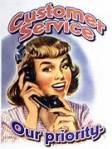
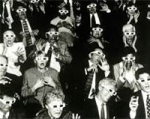
 Scary – isn’t it? Suddenly I can visualize a lot of eyes peeking up over cubicle walls or peering from behind computer screens questioning that communication tactic. But it’s still an important business technique. It’s called the personal touch.
Scary – isn’t it? Suddenly I can visualize a lot of eyes peeking up over cubicle walls or peering from behind computer screens questioning that communication tactic. But it’s still an important business technique. It’s called the personal touch. When you work in customer service, sales, education, or as an administrator / supervisor, you are expected to be informative and have solutions. But whether your clients, students, or co-workers have the attention span to hear, listen to, and remember what you are saying (your message) depends on how it is delivered.
When you work in customer service, sales, education, or as an administrator / supervisor, you are expected to be informative and have solutions. But whether your clients, students, or co-workers have the attention span to hear, listen to, and remember what you are saying (your message) depends on how it is delivered.
 Network with event planners (people who can hire you) that already agree with your message.
Network with event planners (people who can hire you) that already agree with your message.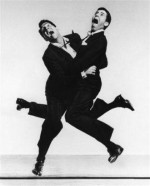 Here’s a personal example…
Here’s a personal example…






 I placed my suitcase and shoes on the conveyor belt and followed the guy in front of me to go through the body scanner. He was a few inches over six feet, had longish hair and looked like he worked out. For our purposes we’ll call him Fabio.
I placed my suitcase and shoes on the conveyor belt and followed the guy in front of me to go through the body scanner. He was a few inches over six feet, had longish hair and looked like he worked out. For our purposes we’ll call him Fabio. I began walking to my gate and noticed Homer talking to a woman and young girl. I’ll assume they were his wife and daughter and for our purposes we’ll call them Marge and… well, I’ll skip The Simpson’s reference, but I’m sure you’ll get the picture. His face was red and looked angry as he pointed his finger toward me.
I began walking to my gate and noticed Homer talking to a woman and young girl. I’ll assume they were his wife and daughter and for our purposes we’ll call them Marge and… well, I’ll skip The Simpson’s reference, but I’m sure you’ll get the picture. His face was red and looked angry as he pointed his finger toward me. But I was hit with a very uncomfortable realization. Maybe there was no “Y” for two lines at security. Perhaps Fabio had also innocently (or on purpose?) cut in and I blindly followed. If this was the case, it was an honest mistake. And if Homer had calmly said, “The line starts back there,” I would have followed the rules of civilized people and taken my place at the end.
But I was hit with a very uncomfortable realization. Maybe there was no “Y” for two lines at security. Perhaps Fabio had also innocently (or on purpose?) cut in and I blindly followed. If this was the case, it was an honest mistake. And if Homer had calmly said, “The line starts back there,” I would have followed the rules of civilized people and taken my place at the end.


